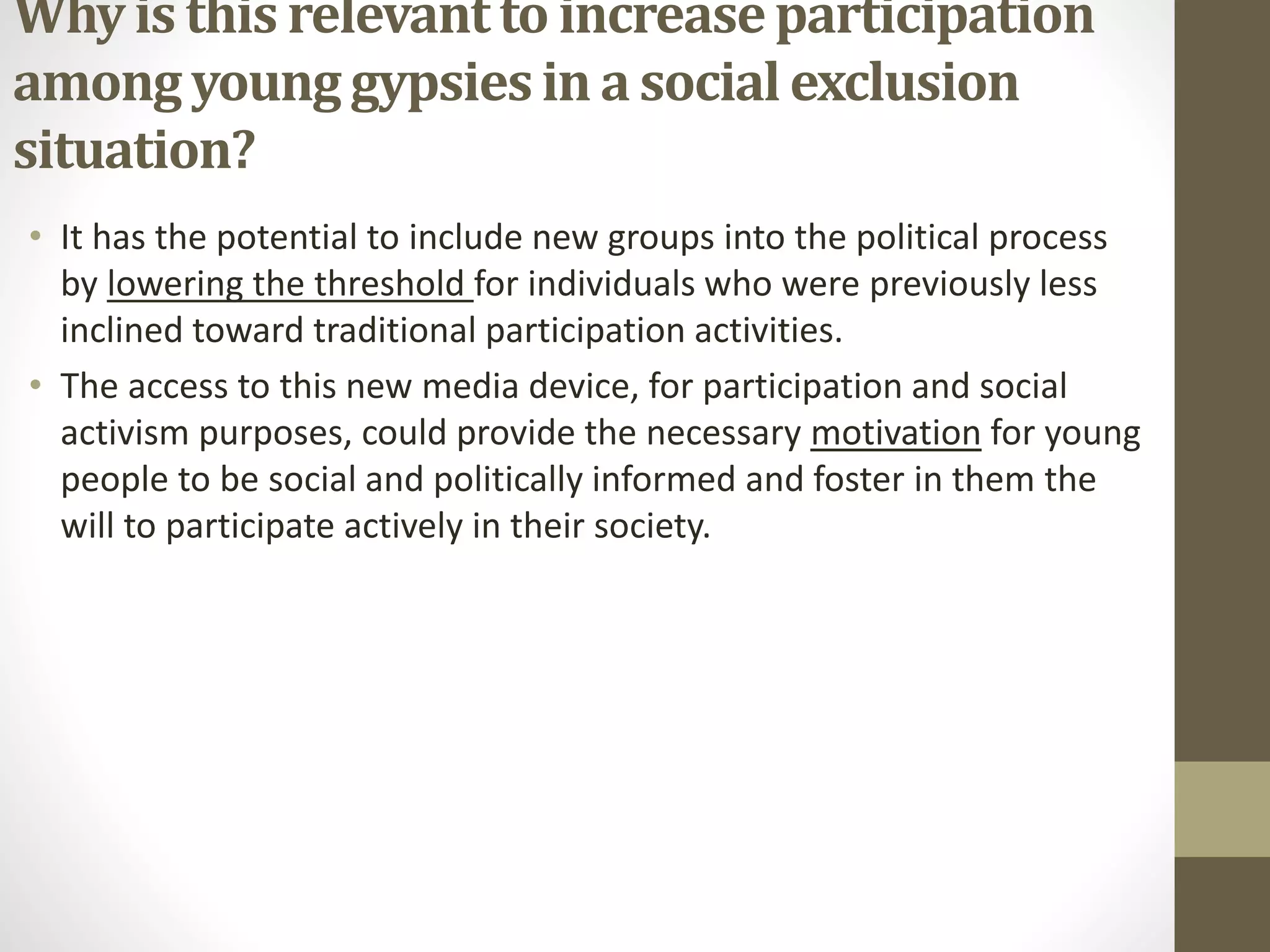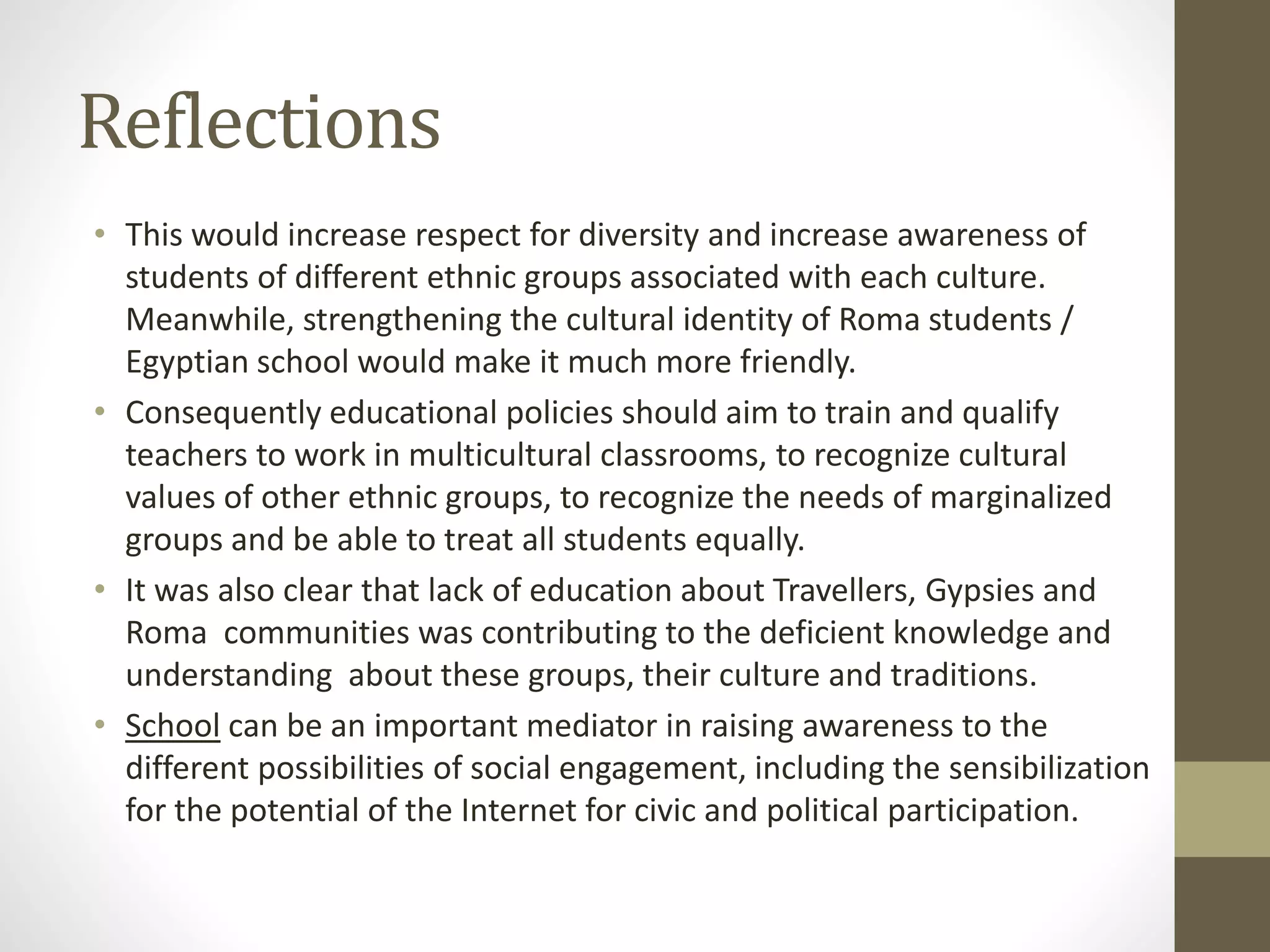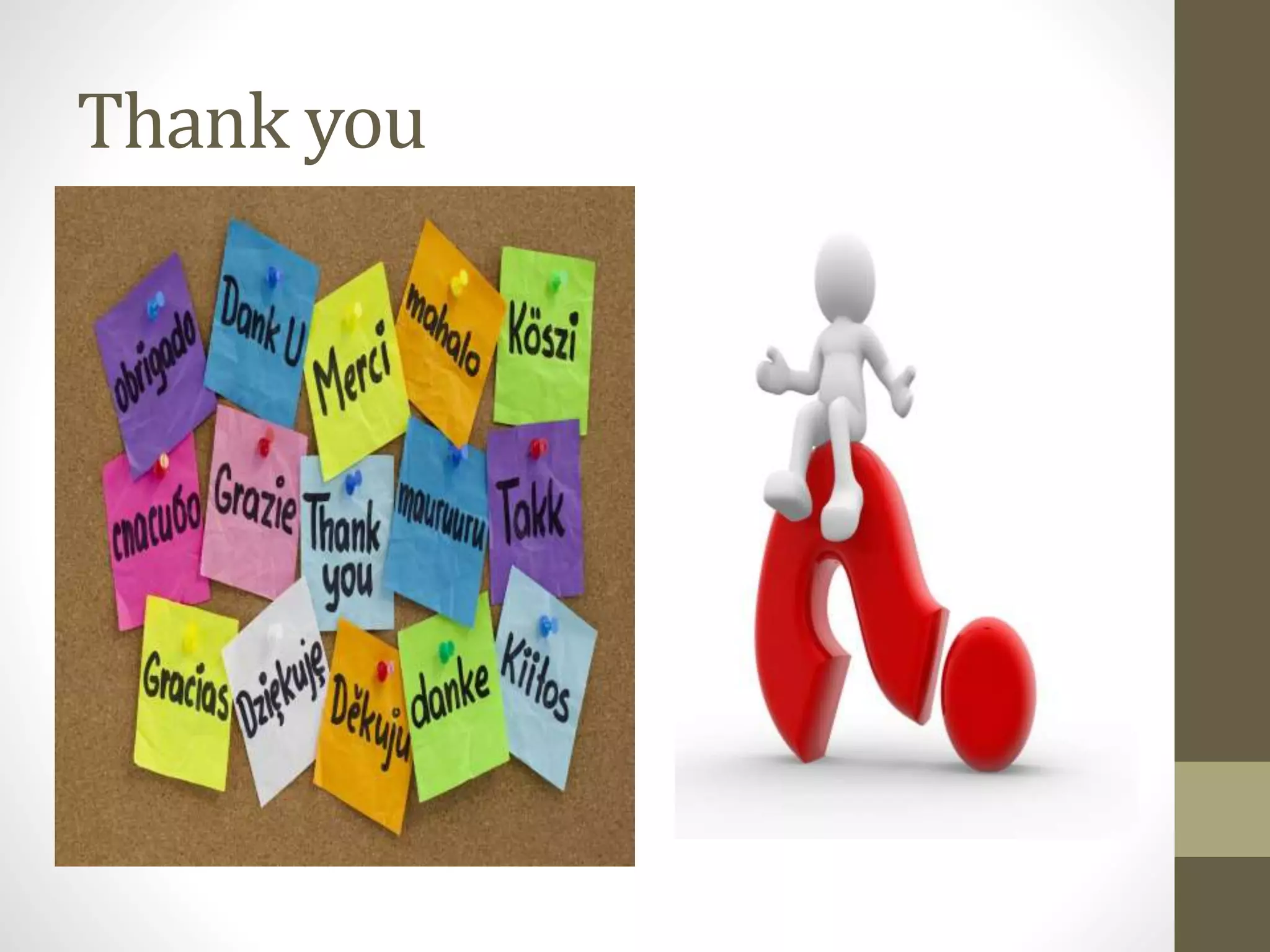This document discusses frameworks for understanding marginalized groups and their participation in society. It focuses on intersectionality and how people have multiple, intersecting identities that shape their experiences of marginalization. Gypsy communities are used as a case study. Some key challenges to their participation include poverty, poor health, lack of education, employment barriers, and cultural barriers. However, the online sphere, like Facebook, may help lower barriers to political and civic participation for marginalized youth by making engagement easier and more interactive at low cost. Understanding intersectionality and exploring virtual spaces are presented as ways to potentially increase meaningful participation of marginalized groups like young Gypsies.

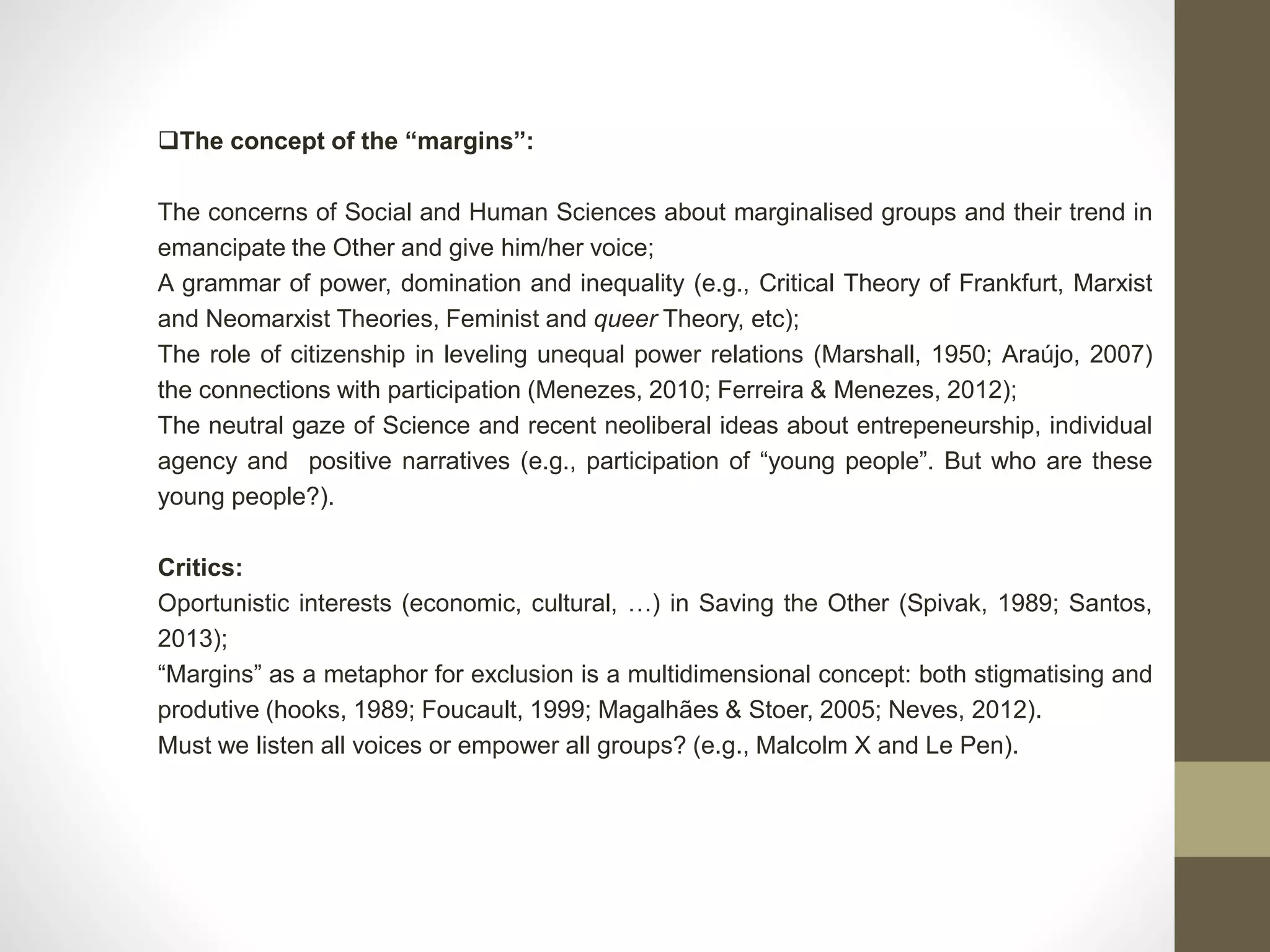
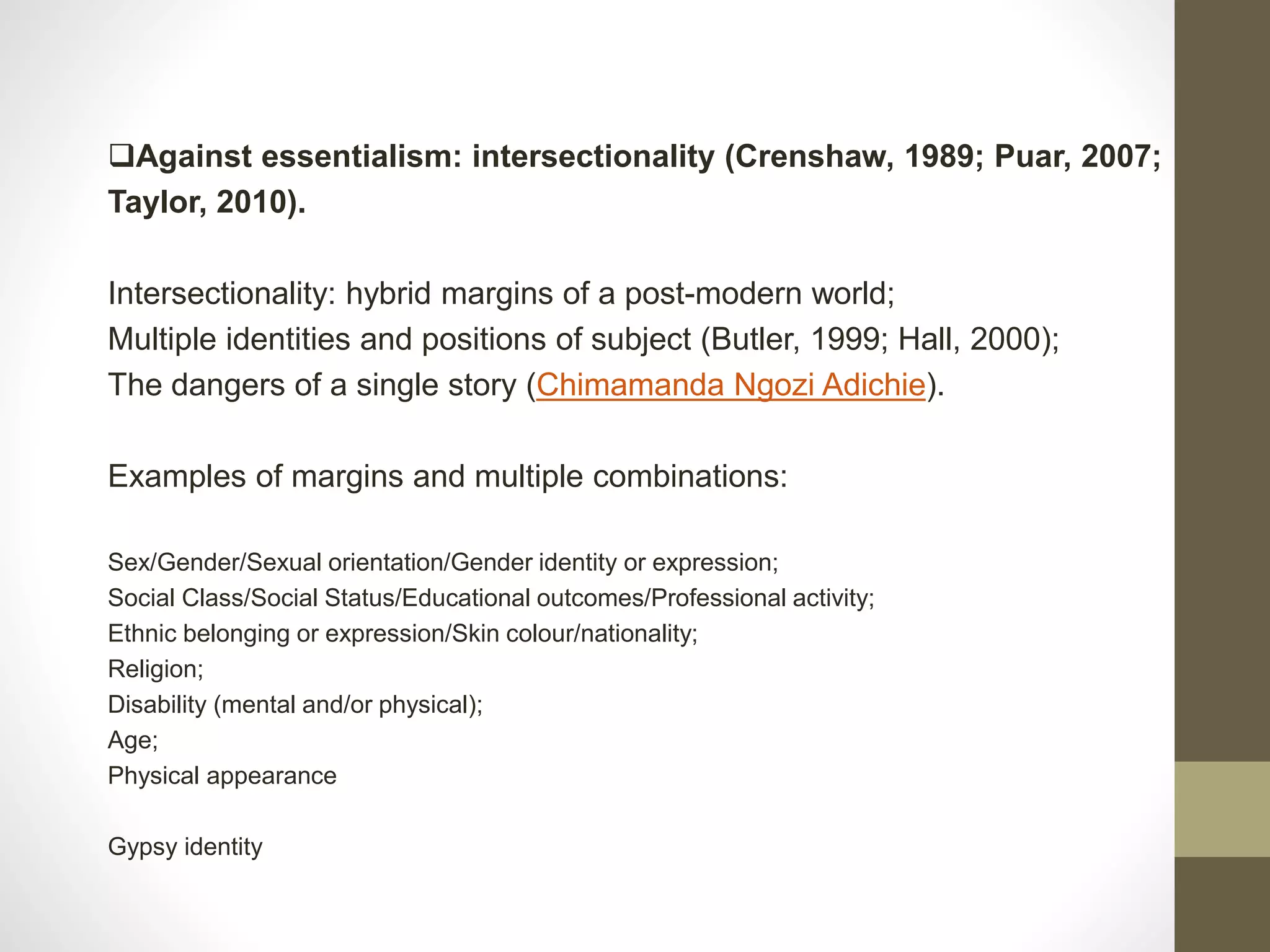

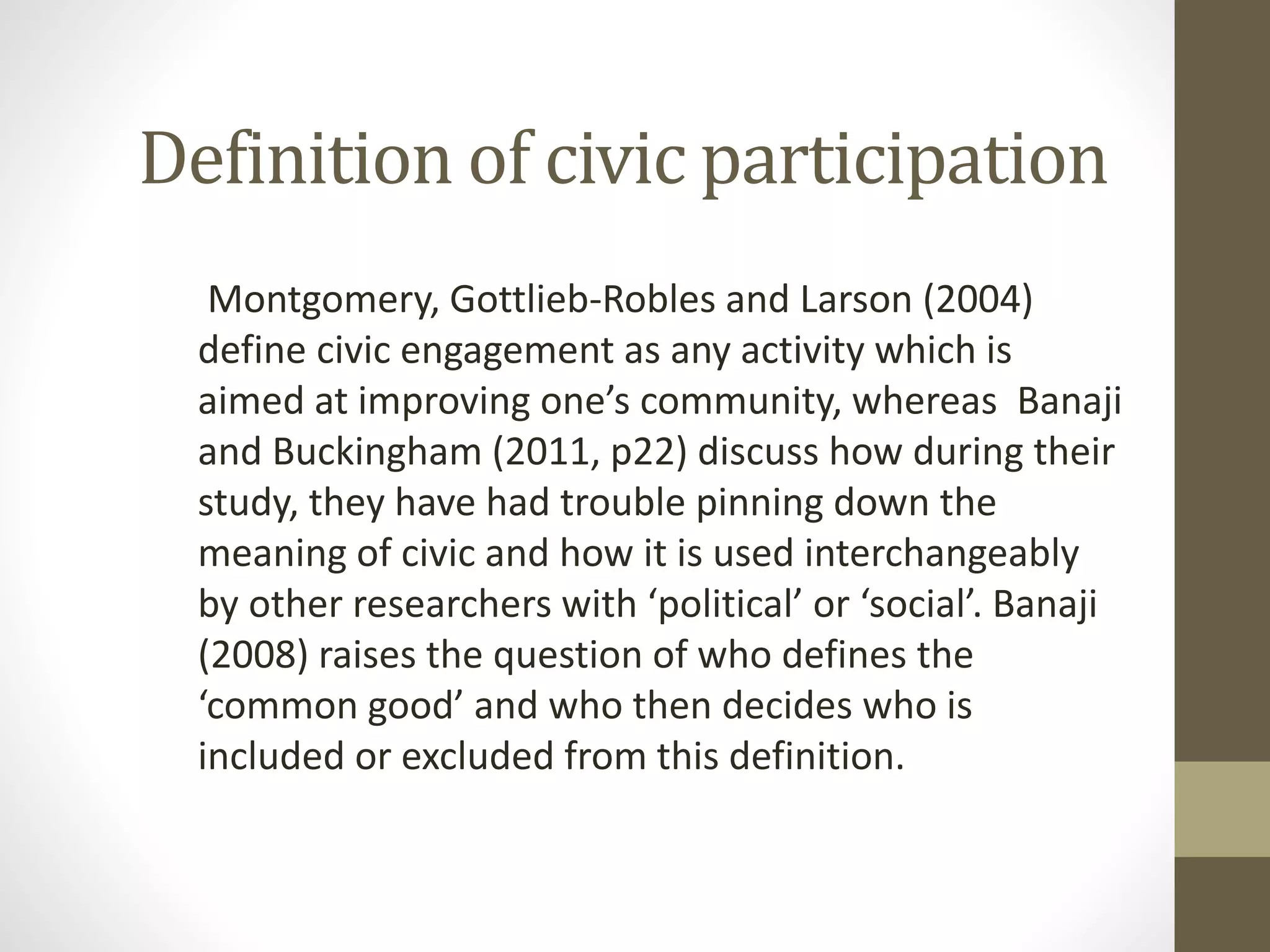
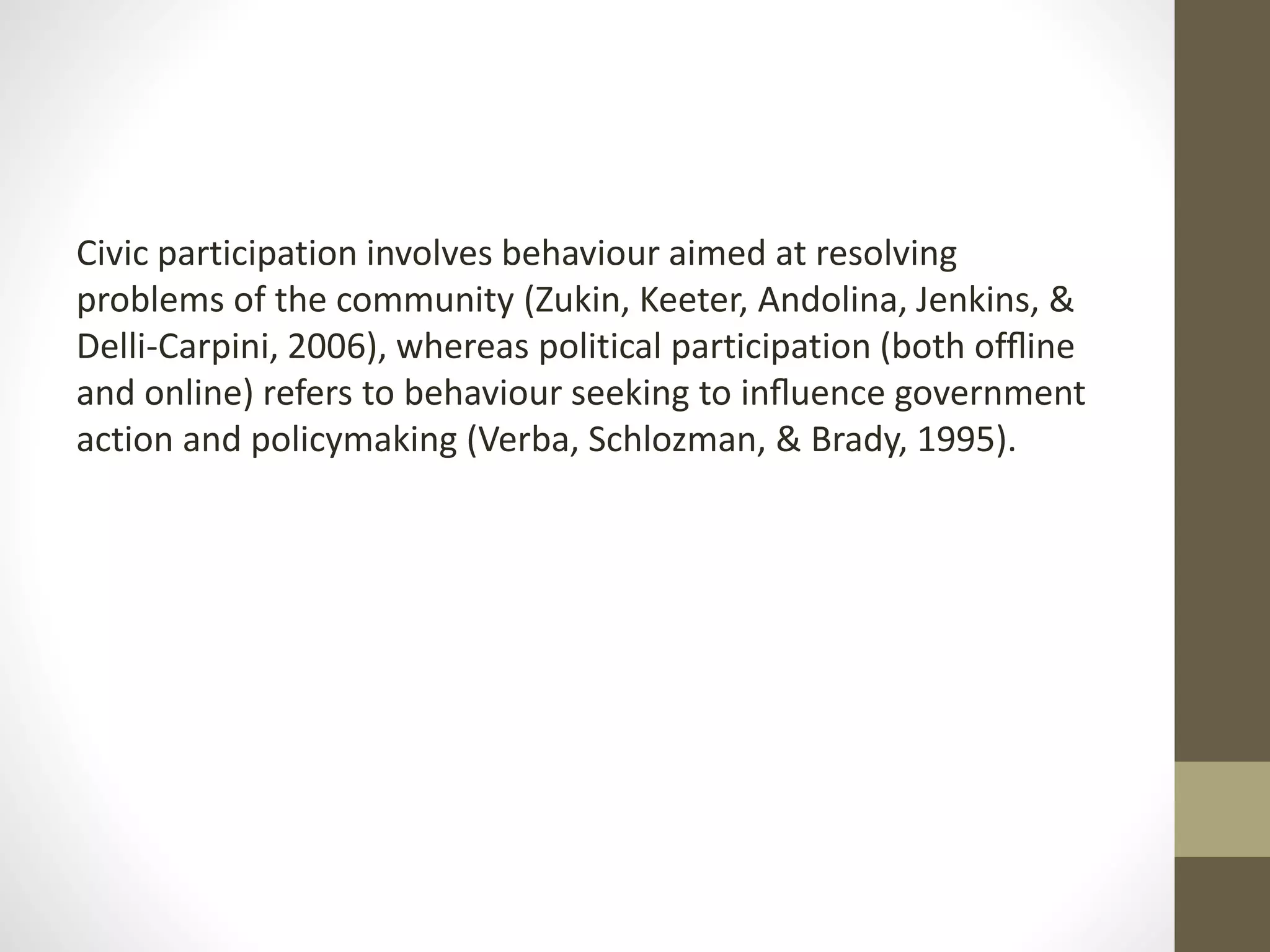
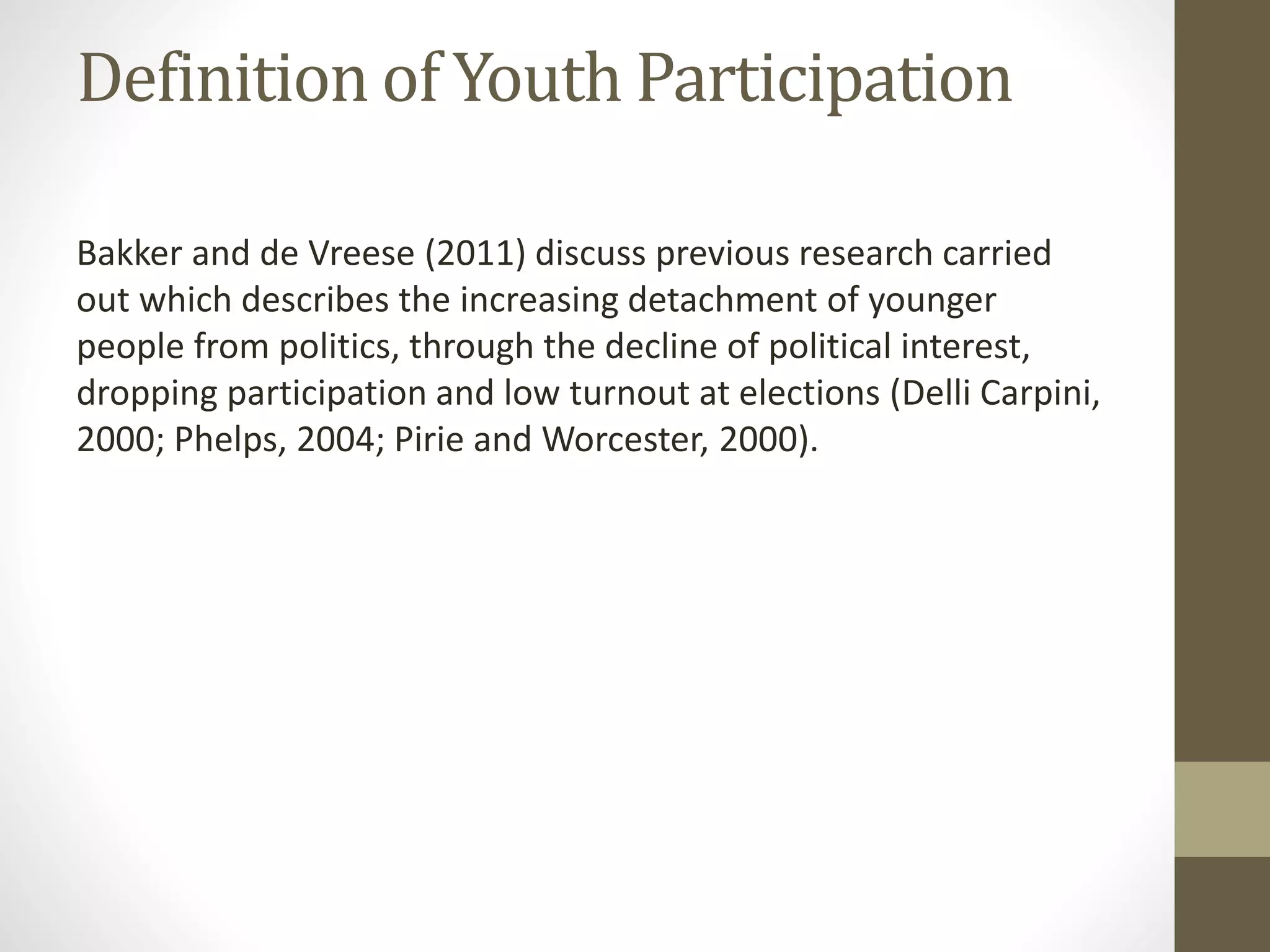

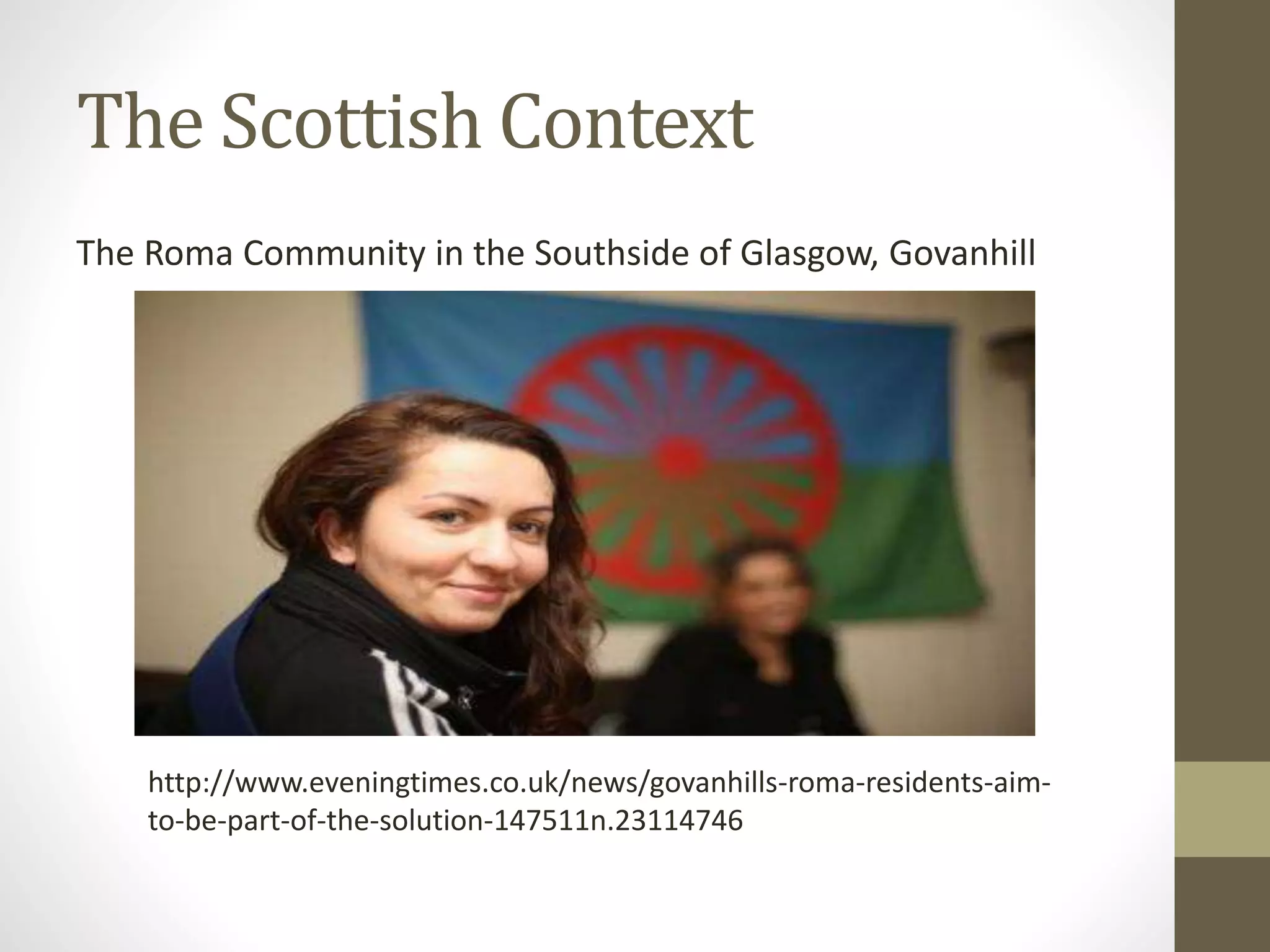
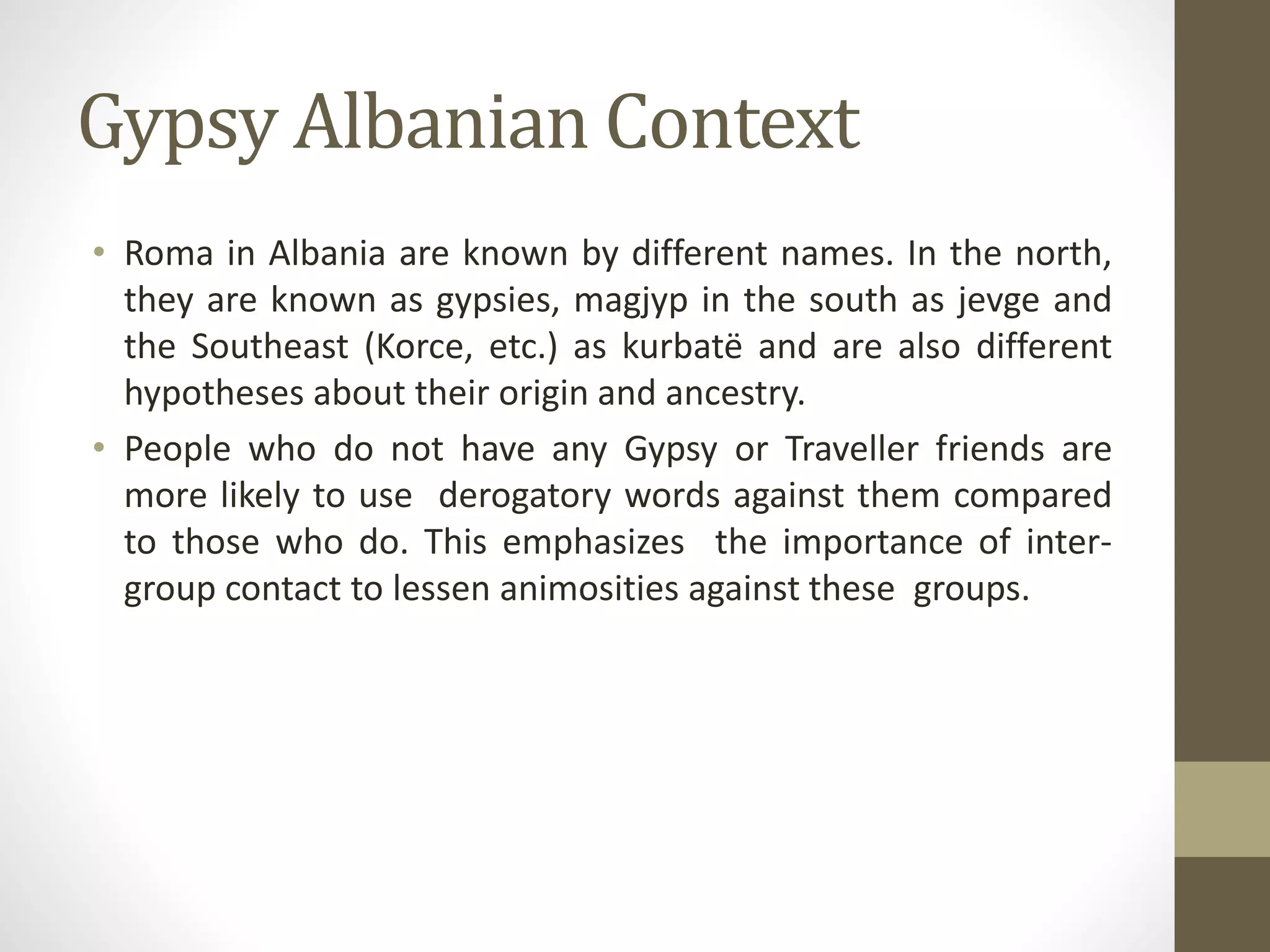

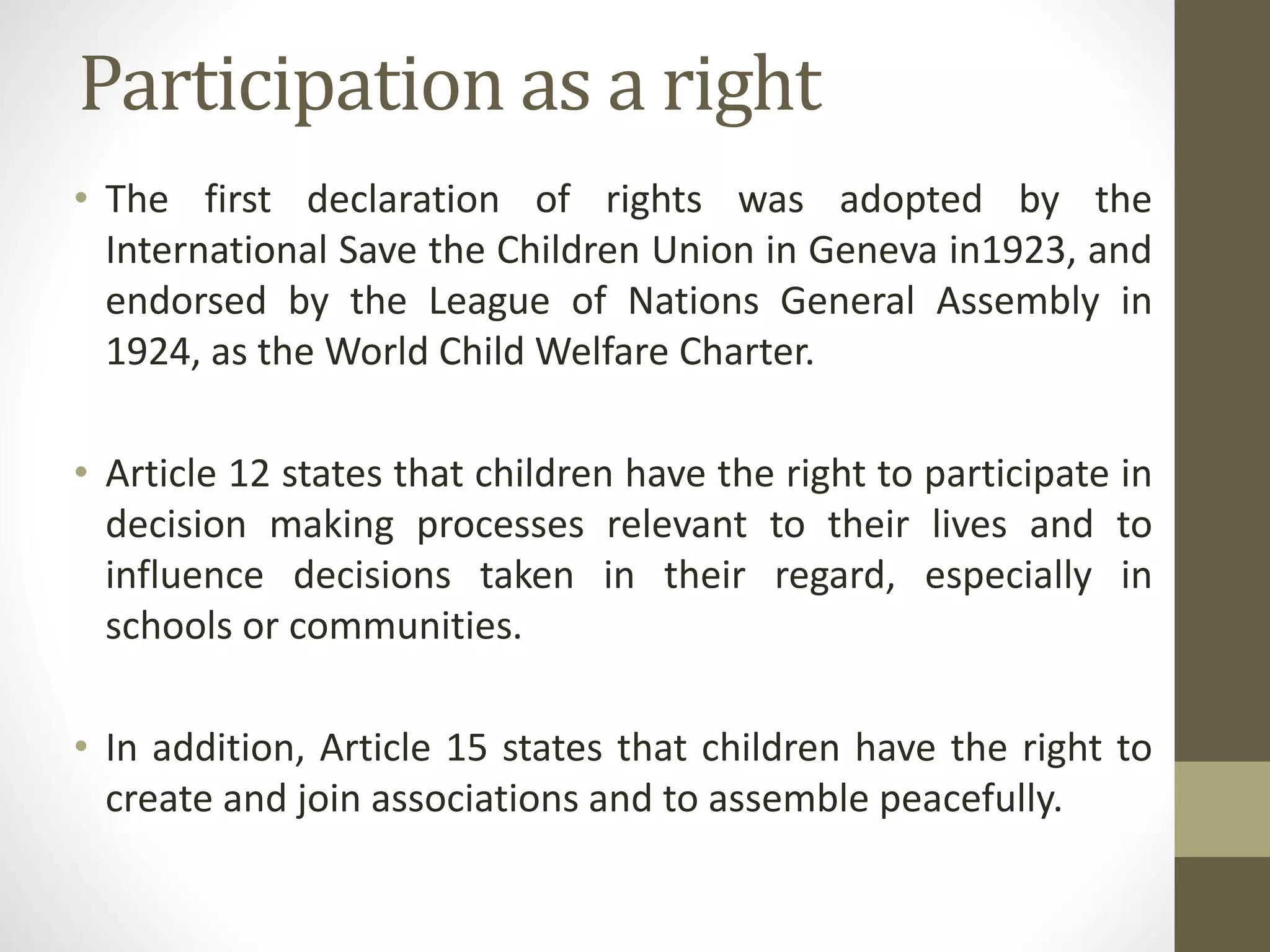
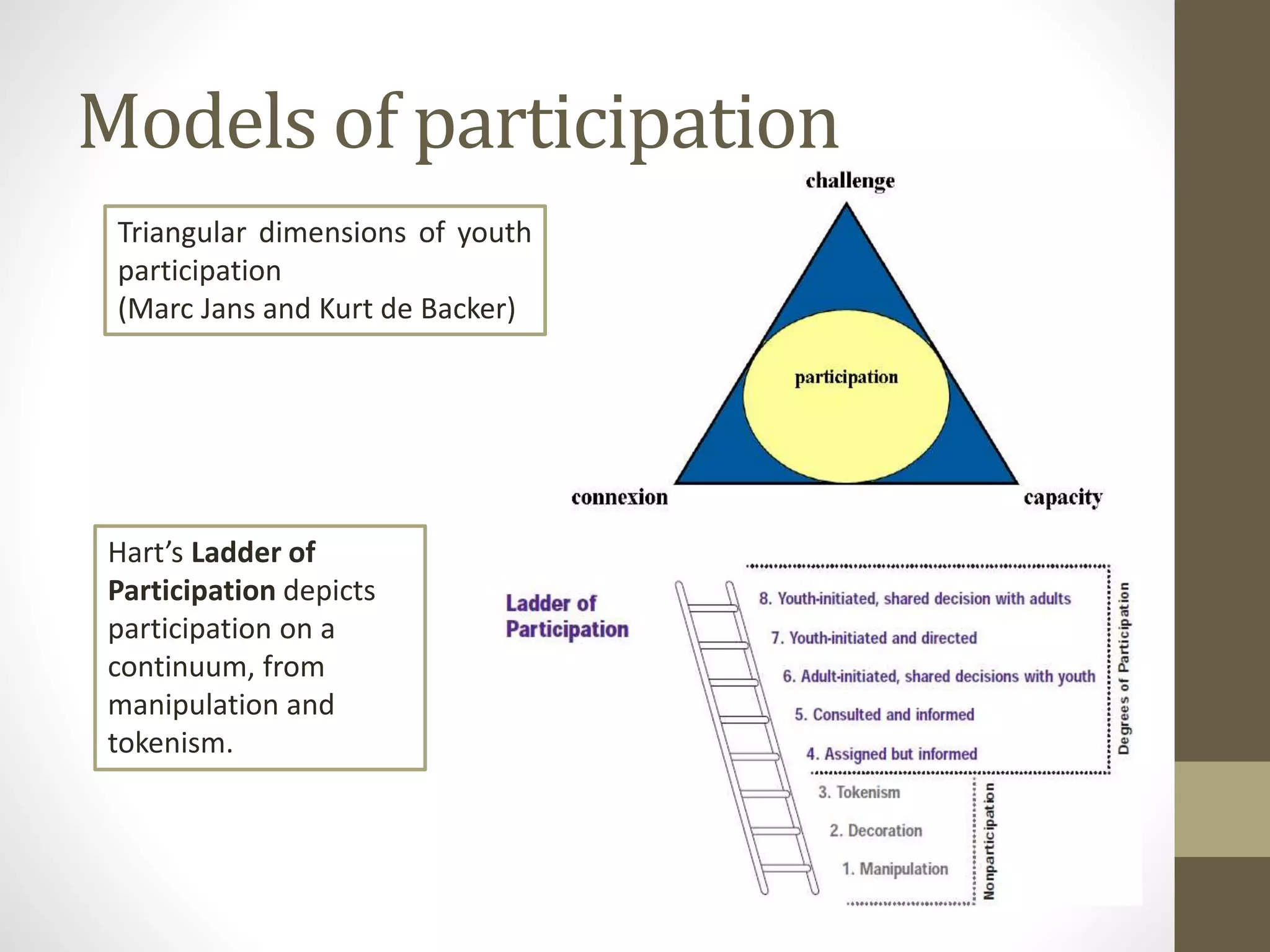
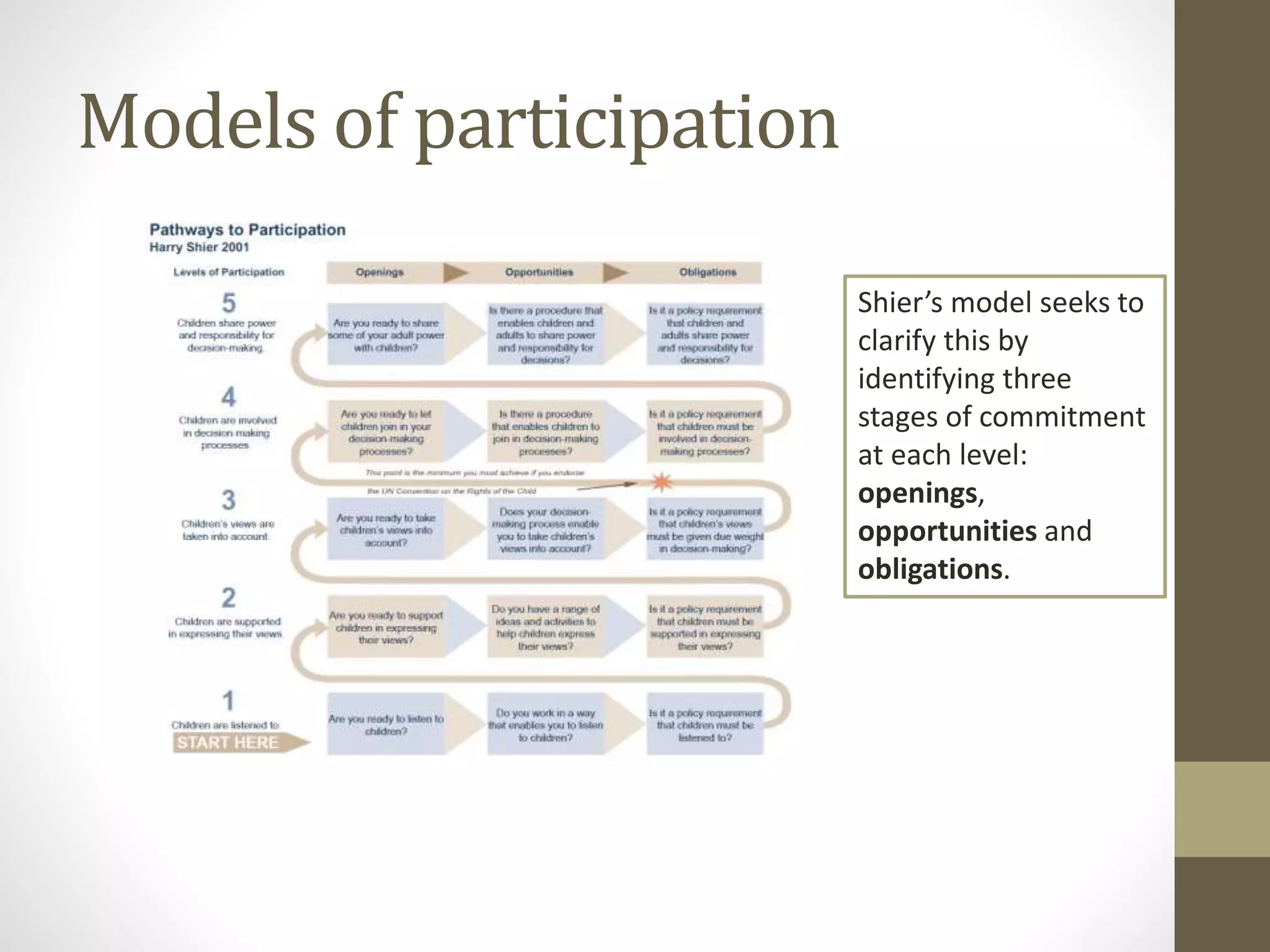
![Obstacles to Participation
Bernstein (1996) says that there are “conditions for an
effective democracy. […] People must feel that they have a
stake in society. […] By stake I mean that not only are people
concerned to receive something but that they are also
concerned to give something” (p. 6).
However, when they are in a situation of social exclusion, such
participation becomes compromised, once the primary
systems of socialization and redistribution of knowledge and
resources ultimately fail in giving the adequate response to
their social needs.
Taking this in mind, urges the need to (re)consider ways of
involving young people whose expression of citizenship, for
some reason, is compromised.](https://image.slidesharecdn.com/rethinkingparticipationinaeuropeancontext-140529110705-phpapp02/75/Rethinking-Participation-In-A-European-Context-15-2048.jpg)
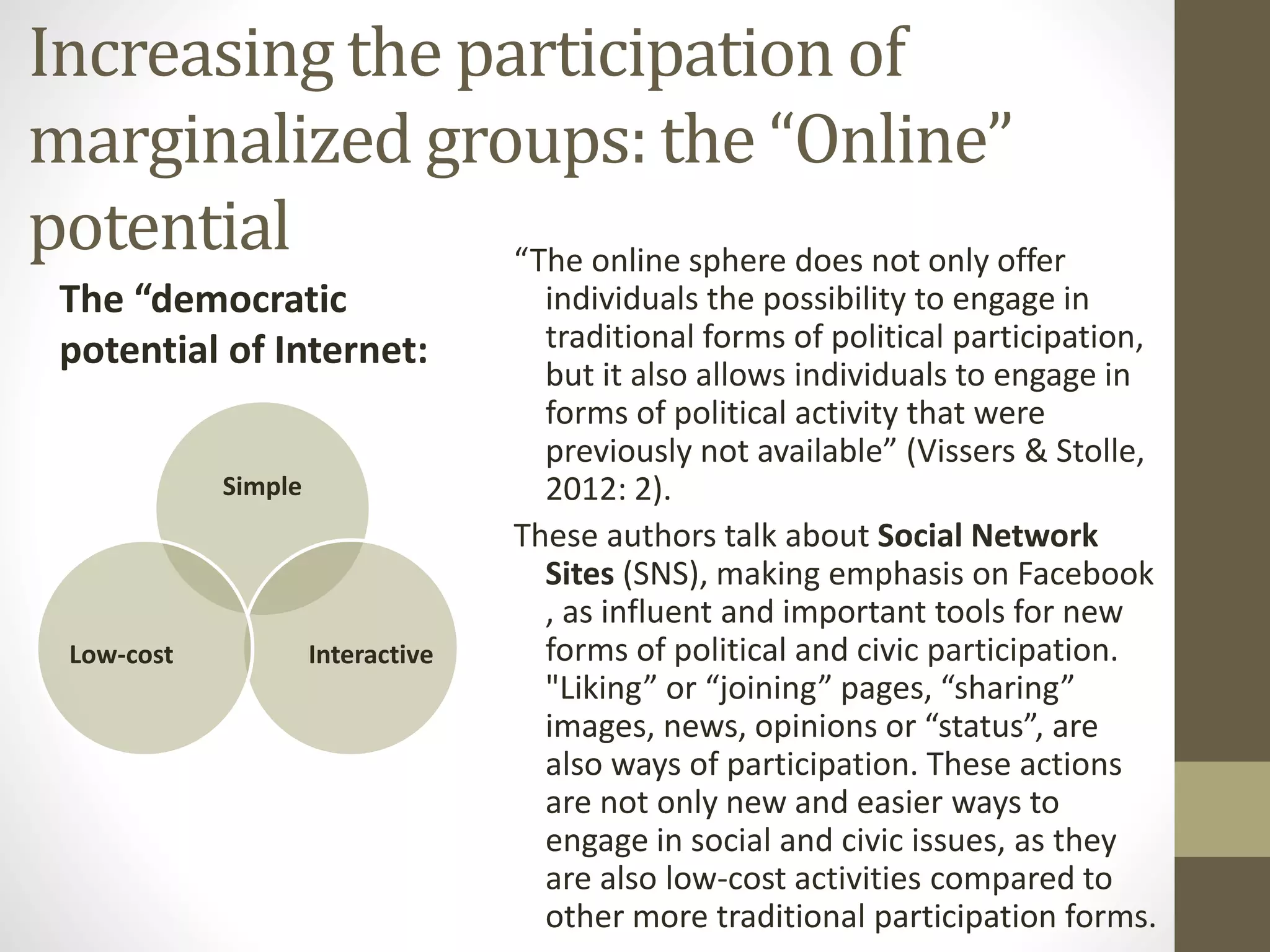
![Why is Facebook a possible tool of mobilization for political and
civic participation?
According to Vissers & Stolle, because:
• Of its “ubiquity” (id: 3);
• it “is a communication medium that holds a huge potential for
interactivity and interconnectivity” (id: 4);
• it “has the potential to make political information more readily
available, particularly for those who do not necessarily seek it[;]
• (…) allows individuals to communicate independent from time
and place, whether in real-time or under the form of ‘delayed’
or asymmetrical communication” (id: 5);
• it “holds new potential to foster political engagement by
lowering the barriers for political participation” (id: 5).](https://image.slidesharecdn.com/rethinkingparticipationinaeuropeancontext-140529110705-phpapp02/75/Rethinking-Participation-In-A-European-Context-17-2048.jpg)
